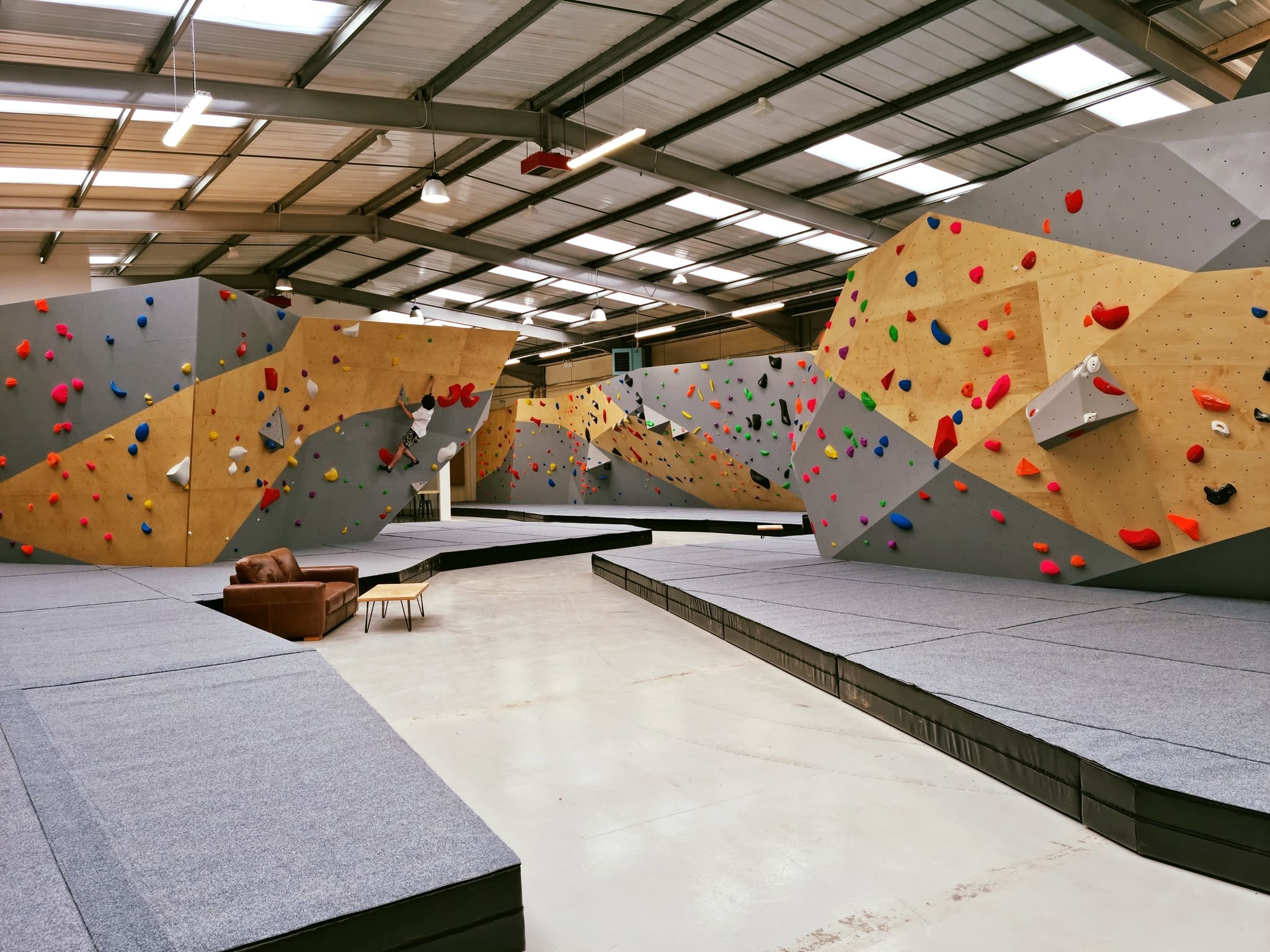Bouldering
Why the sport has millions climbing up the walls

Your hands start to sweat while you hold on by your fingertips. Forearms are pumped and your leg begins to shake. You push yourself to reach out for the top hold but your foot slips and you start to fall. Your heart stops as you plunge to the ground – onto the safety of a crash mat just a few metres below.
You get back up and try again, and again, and again.
This is the experience of the thousands of people who have taken up bouldering, a form of rock climbing often performed on indoor climbing walls.
Instead of the use of ropes and safety equipment, climbers scale a wall around 4.5m high surrounded by a soft padded floor.
"Climbing has become mainstream."
On indoor climbing walls, plastic holds are used to imitate the style of natural rock formations to form man-made routes – or ‘problems’.
The sport has experienced a surge in popularity in recent years - and shows no sign of slowing.
Director of Manchester's BlocHaus Climbing, Richard Wainwright, feels that bouldering has not always been a well known activity, but nowadays many people know a climber or have tried the sport themselves.
He said: “The phrase people use is that climbing has become mainstream."
Bouldering's growing popularity
Google analytics data shows online searches for ‘bouldering’ have increased steadily over the past decade.
Searches for 'bouldering' increased in April 2019 as the IFSC Climbing World Cup was taking place - a competition for which the bronze medal was awarded to Shauna Coxsey, described by the British Mountaineering Council as Britain’s greatest-ever competition climber.
Searches decreased dramatically from 2020 when restrictions were introduced during the pandemic, but peaked in August 2021 when a combination of relaxed restrictions and bouldering's Olympic debut piqued public interest in the sport.

Research by the Association of British Climbing Walls (ABC) shows around one million people in the UK climb indoors each year, with 100,000 climbing at least twice per month.
Of these 100,000 frequent climbers, almost three quarters only climb indoors.
The ABC estimate that the sport is growing by 15-20% a year, though current data would likely be skewed by the coronavirus pandemic.
Online searches for ‘climbing wall near me’ also increased over the past decade as aspiring climbers hunt for their local climbing centres (again the pandemic restrictions impacted results since 2020).

According to the BMC, there are now more than 400 climbing walls in the UK - with seven dedicated climbing centres in Greater Manchester - and more are opening every year.
You can find your nearest bouldering wall on this map of North West climbing centres:

Why has bouldering become so popular?
There may be a number of reasons why bouldering has become so much more than just a fringe sport.
Several recent high profile events in the climbing world have broadened bouldering's visibility and inspired many people to have a go themselves.
The most significant of these is the attention given to the sport during its inclusion in the Olympics last year - with it due to feature again at the Paris 2024 competition.
The increased profile of bouldering can also be attributed to the release of several noteworthy climbing documentaries, including The Dawn Wall (2017) and the Oscar winning Free Solo (2018).
A new documentary following several climbers' journeys to the Olympics - including Team GB's Shauna Coxsey - is due for release later this month:
Out in the UK on 18th January! 📺 The feature-length documentary - The Wall: Climb To Gold - following @shaunacoxsey Janja Garnbret, Brooke Raboutou and Miho Nonaka on their journeys to the Olympics, will soon be available on Amazon, Apple TV & Google Play.
— British Mountaineering (@Team_BMC) January 5, 2022
#WatchTheWall2022 pic.twitter.com/tqPeL80pmJ
Bouldering is the most accessible form of sport climbing.
Anyone can do it, and as such many of us have begun to include a bouldering session as part of our regular exercise routine.
There are many benefits to bouldering, in terms of both physical and mental health.
Research previously published in Time shows that climbing involves almost the whole body’s musculature and offers a great cardiovascular workout.
Data suggests that a good climbing session can burn almost as many calories as an intense spinning session.
In addition to its physical benefits, studies show that bouldering can be therapeutic and offer an effective treatment for depression – as well as its problem solving element helping improve cognitive skills.
Read more about this here:
BlocHaus Climbing
The latest addition to the growing number of climbing centres in the North West opened its doors in July 2021.
Situated less than a few miles from Manchester's city centre, BlocHaus Climbing boasts more than 150 bouldering routes - or 'problems' - housed inside a 16,000ft² building.
Speaking to Mancunian Matters, company director Richard Wainwright says that, although bouldering has developed throughout its history, the past decade is seen as a good period of growth for the sport.
He said: “Definitely something has changed, to some extent there will have been a snowball effect of more people getting into climbing, more climbing walls popping up and a cycle where it just grows naturally in popularity.
“Maybe it didn’t really need things like [Free Solo] or the Olympics because it was growing anyway, just because it’s great.”
This increase in popularity has allowed for improved facilities – and more of them – that have more appeal compared to climbing centres of the past.
Indoor climbing walls were initially created to solve a problem: where to climb when it rains.
These days, many people climb solely indoors, something Richard says was not the case when indoor walls started appearing.
He feels bouldering benefits from having fewer barriers than team sports or gym training, meaning more people are likely to try it.
The climbing centre environment offers something to people who may feel out of place in a gym or feel like they do not fit in in a team sport setting.
With no equipment needed other than a pair of climbing shoes – which can be hired in-centre – and a welcoming community of climbers, anyone can feel comfortable having a go themselves.
Richard said: “More or less you can just turn up and climb – I think we have a really welcoming place, and a lot of other walls do too.”
When asked about bouldering’s future, Richard cannot see its popularity waning any time soon.
He said: “It wouldn’t surprise me to continue hearing of other walls opening around the UK.
“There are a few new walls being built which are in dedicated buildings specifically for the purposes of a climbing wall.
“I don’t think there will be a point where every single person in the UK will be a climber, but there’s definitely room for a continuation of the path we are on.”
Watch the full interview here:
Images courtesy of BlocHaus Climbing.

VIDEO: What does local climber Tom gain from bouldering?
After a particularly tough period involving a heart attack and his wife's miscarriage, 31-year-old Tom Mackrory took up bouldering as a form of physical and mental betterment.
Mancunian Matters spoke to Tom to find out what he gains from spending time on the walls:
"Mentally is the biggest area where [bouldering] helped me, it felt like a form of meditation on the wall."
Follow Tom's journey on Instagram @portlycore.

